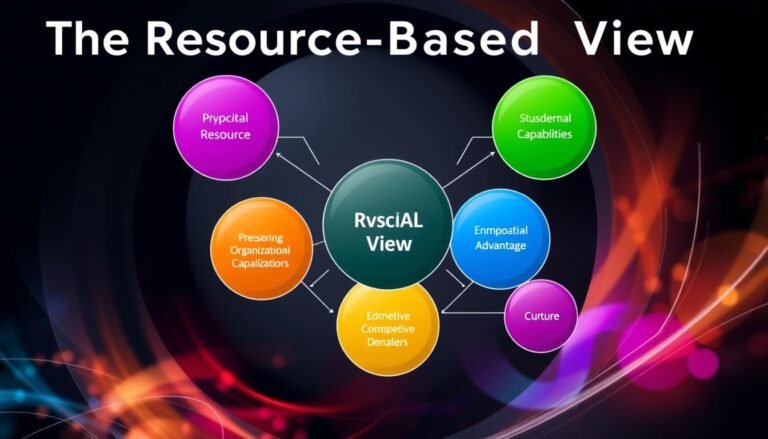Pareto Principle (80/20 Rule): Boost Productivity
Have you ever thought about why a small part of your work often brings most of your results? The Pareto Principle, also known as the 80/20 Rule, shows that 80% of results come from just 20% of causes. This idea is more than just a number. It’s a key tool to boost your productivity and manage your time better. By finding the most important tasks that greatly affect your success, you can change how you work and get more done with less effort. To be more efficient, it’s important to know how to use this principle. Can you figure out which 20% of your tasks are making 80% of your success?
Key Takeaways
- The 80/20 Rule suggests 80% of results come from 20% of efforts.
- Identifying high-impact tasks can enhance time management and efficiency.
- In business, focusing on key factors can lead to increased profitability.
- The principle underscores the importance of strategic prioritization.
- Applying the Pareto Principle can result in significant gains across various fields.
Understanding the Pareto Principle
The Pareto Principle, also known as the 80/20 rule, helps us see patterns in life and business. It says a big part of results comes from a small part of the causes. Many areas show this imbalance in how outputs and inputs are distributed.
Definition and Origins
The Pareto Principle states that about 80% of results come from just 20% of causes. It started with Vilfredo Pareto, an Italian economist, who noticed in the late 19th century that 80% of Italy’s land was owned by 20% of the people. This idea has grown to apply in many areas.
Vilfredo Pareto and the Historical Context
Vilfredo Pareto did more than just economic research. His work led to Pareto analysis, a method used in business and social sciences for making decisions. His findings show the importance of focusing on key factors for success. For instance, often, 80% of a company’s profits come from just 20% of its customers.
This principle shows how a small part of inputs can lead to most of the results. Examples include:
- 20% of workers produce 80% of results.
- 20% of bugs cause 80% of crashes.
- 20% of features lead to 80% of usage.
The Pareto Principle guides us in using resources wisely. It tells us to focus on the key causes that bring big results. This approach helps in making better decisions, leading to more productivity and efficiency in many areas.
Applications of the Pareto Principle in Business
The Pareto Principle helps businesses work better and make more money. It shows that 20% of something often does 80% of the work. This idea helps companies focus on what really matters and make their work more efficient.
Identifying Key Factors in Revenue Generation
Using the Pareto Principle, companies can find the 20% of clients or products that bring in 80% of their sales. Most sales come from a small group of customers. This knowledge lets businesses focus on their best customers.
By focusing on these key customers, companies can keep them happy and increase profits.
Streamlining Operations and Processes
By focusing on the 20% of things that cause problems, companies can get better at what they do. For example, finding out where production goes wrong helps fix it. Using methods like Six Sigma, companies can see where they’re not doing well.
This helps them improve and make better products. It also makes their work more efficient and increases profits.
Pareto Principle (80/20 Rule) in Time Management
Using the Pareto Principle in time management boosts productivity and focus. It helps to focus on tasks that give the biggest results. This means 80% of productivity comes from just 20% of tasks. By focusing on these key tasks, you can make a big impact.
Prioritizing Daily Tasks for Maximum Impact
Identifying the most important tasks helps in effective time management. This follows the 80/20 rule in productivity. By focusing on the critical 20%, you can greatly improve your workday. Here are some strategies for prioritizing tasks:
- Assess the impact of each task on your goals.
- Look at deadlines and immediate benefits.
- Manage your workload and time well.
Using these strategies daily can make you more efficient and help you manage your time well. This leads to better results.
Using the Principle of Least Effort to Increase Efficiency
The Principle of Least Effort goes well with the 80/20 rule applications. It teaches us to work smarter, not harder. This means doing things in a way that requires less effort but still gets good results. Here’s how to apply it:
- Find methods that give the best results.
- Use your strengths and resources well.
- Keep things simple to stay efficient.
By using the Principle of Least Effort with the Pareto Principle, you can be more productive. You’ll also manage your workload better.
Real-World Examples of the 80/20 Rule
The Pareto Principle shows up in many areas, giving deep insights into how customers make profits. A small group of customers often brings in a big chunk of a company’s earnings. For example, 80% of sales come from just 20% of customers. By focusing on these key customers, companies can keep them happy and boost profits.
This rule also applies when looking at time and results in fields like education, healthcare, and managing projects. For instance, about 20% of what students study is what they need to know for exams. So, focusing on these key areas can greatly improve their grades. In healthcare, fixing just 20% of big issues can make a big difference, showing how efficient this rule can be.
The Pareto Principle has big implications in many industries, helping guide decisions and plans. It shows that 20% of employees often do 80% of the work, or 20% of companies cause 80% of pollution. Knowing this helps professionals aim their efforts better. By using the 80/20 rule, companies can become more efficient and effective, leading to better results everywhere.
Source Links
- The 80-20 Rule (aka Pareto Principle): What It Is, How It Works
- What Is the 80/20 Rule? How the Pareto Principle Will Supercharge Your Productivity
- The 80/20 Rule of Time Management
- Learn the Pareto Principle (The 80/20 Rule) [2024] • Asana
- Understanding the Pareto Principle (The 80/20 Rule)
- The 80/20 Rule: How Businesses Apply the Pareto Principle
- 80/20: The Pareto Principle and Its Application In Consulting
- Pareto Principle for Time Management and Prioritization • ActiveCollab
- The Pareto principle (the 80:20 rule) in time management | Spica
- 100 Examples of the 80/20 Rule with 35 Key Insights
- Examples of the 80-20 Rule (Pareto Principle) in Practice







